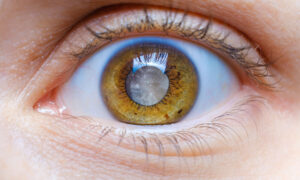May 1, 2024
By Hashim Ali Khan, OD, FAAO, Dipl AAO, PhD Candidate at Brien Holden Vision Institute, Sydney
While a substantial amount of research has been conducted, there is still much more to learn about myopia control and prevention. Normative progression data is the most valuable clinical reference in managing myopia. Published growth curves may not provide accurate estimates for refractive error progression in myopic eyes due to their inherent limitation of being population specific and including data from both myopic and non-myopic individuals.
The meta-analysis by Smotherman et al. aimed to model progression in myopic children, focusing on the influence of age and race. The study conducted a comprehensive search across major scientific literature databases and included 127 evaluations in the final model. All important predictors, including age, gender, race, and baseline refractive error, were included and modeled at three levels of random effects to account for variability.
The final model was plotted as growth curves as a function of age (between 8 to 16 years) and race (Asian vs non-Asian) with prediction intervals.
The model indicated a gradual slowing down of myopia progression as age increases, with a 9.7% (95% CI 5.4%-13.9%) slower progression per year, and the effect is greater in Asian children compared to non-Asians by 42.2% (95% CI 18.3%-70.0%).
This analysis provides age-specific myopia progression curves, including the effect of ethnicity on progression and variability of progression, thus providing an excellent tool for monitoring myopia progression and evaluating the efficacy of myopia control treatments. Despite the limitation of using aggregated data, this study employs a first-weighted random effects model to analyze the progression of refractive error in myopes. The model provides benchmark estimates for the progression of refractive error across different age groups and the effect of race on progression. Thus, it can serve as an invaluable tool for clinical reference and other potential applications in myopia control.
Abstract
Influence of Age and Race on Refractive Error Progression in Myopic Children
Carmen Smotherman; Noel A Brennan; Xu Cheng; Wright Shamp; Ryan Butterfield; Mark A Bullimore
Purpose: With increasing interest in slowing myopia progression, normative data for progression in myopic children provide a valuable clinical reference. Growth curves have been presented but are specific to population and usually include both myopes and non-myopes, limiting their application to myopia control. We conducted a meta-analysis to model refractive error change in myopic children with an emphasis on the influence of age and race.
Methods: A comprehensive electronic systematic search was performed using Ovid Medline, EMBASE, Cochrane Central Register of Controlled Trials. To achieve maximum sensitivity of the search strategy, the following terms were used: “myopia” or “myopic” and “child” or “children” and “progression” or “longitudinal” or “follow-up” or “shift” and “refractive error.” There were 106 studies with 165 subpopulations and 359 evaluations of the mean refractive error from baseline that met our inclusion criteria. Mean rate of change in refractive error was analyzed using a multivariate linear mixed effects meta-analysis model. All collected covariates were tested for significance (age, race [east Asian or not], and baseline refractive error selected). The model included three levels of random effects to account for all variability. Prediction intervals were calculated to show likely variability across a population.
Results: Only data without missing significant covariates were included in the final model (127 evaluations). The figure shows instantaneous myopia progression (in D/year) as a function of age and race. Mean refractive error progression decreases as age increases (9.7% decrease per year, 95% CI 5.4%-13.9%, P <0.0001) and is greater in Asian children (by 42.2%, 95% CI 18.3%-70.0%, P <0.0001) compared to non-Asians. The estimated prediction intervals show a broad range of progression rates.
Conclusions: To our knowledge, this is the first weighted random effects meta-analysis of refractive error change in myopic children. Interpretation of the data is limited due to the use of aggregated data rather than individual subject data. This analysis sets benchmark values and estimates of the spread of refractive error change for monitoring myopia progression and treatment efficacy.
Smotherman, C., Brennan, N. A., Cheng, X., Shamp, W., Butterfield, R., & Bullimore, M. A. (2023). Influence of age and race on refractive error progression in myopic children. Investigative Ophthalmology & Visual Science, 64(8), 811-811.















